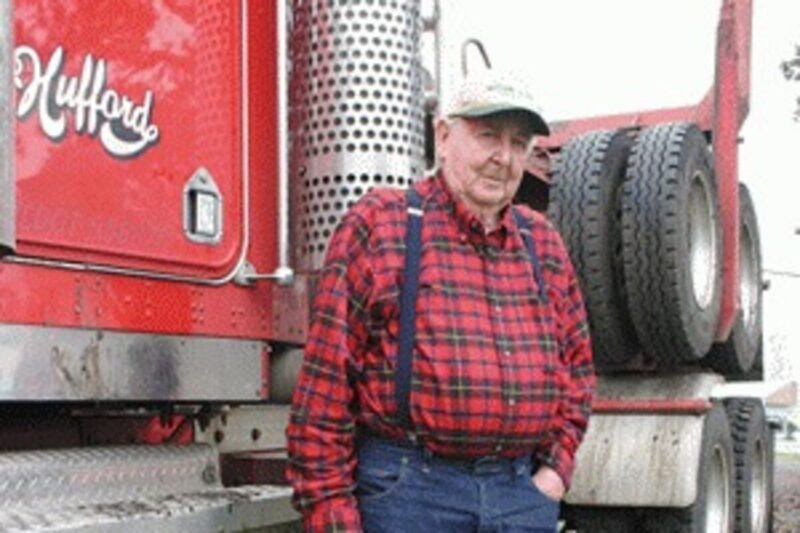Scott Swanson
Of The New Era
It was 1942 in Sweet Home and Tom Hufford and seven of his buddies determined they weren?t going to wait to be drafted to serve in World War II.
?We decided it was time to join something besides the Army,? said Hufford, an alert man with a dry sense of humor who will be 83 this Dec. 2.
So in August 1942 Hufford, then 19, his older brother Frank and six friends signed up to join the Navy. They trooped over to Corvallis for their medical checkups, which they all passed. Then they went to Portland for another physical. Phil Edney didn?t make it past that one, Hufford said.
Edney wore glasses and ?they took his glasses away,? he said. ?But he memorized the eye chart and when he got up to Portland, he took the test and did it perfect. The guy said ?that?s a good job of memorizing, but this is a different eye chart.?
Hufford and his friends Noland Morris and Shelly Keeney decided to try to stay together during their service. After making it through boot camp, they were sent to San Francisco for assignment to a ship.
?We didn?t get drafted for a particular ship, so the guy in charge said we could pick our ship,? Hufford said. ?So we picked the Dewey.?
The USS Dewey was a Farragut-class destroyer with a crew of 160, one of eight of its type. It had been in Pearl Harbor at the time of the Japanese attack there and was believed to have shot down two Japanese planes during the battle.
Hufford went aboard about Christmas of 1942, he said.
Ozzie Osborne, the chief gunner for one of the 40 mm guns, took him under his wing.
?He taught me everything I knew,? Hufford said.
He entered the Navy as an apprentice seaman and was a gunner?s mate first class when he finished his duty.
The Dewey spent most of the war with the Third Fleet, responsible for guarding the rest of the ships.
?I don?t have any idea how many ships were in the fleet,? Hufford said, ?but you couldn?t see them all. They?d be over the horizon from you.?
The fleet cruised from Australia to Alaska, where the Dewey stayed nine months in 1943 as it helped drive the Japanese out of the Aleutians.
After some repairs in Seattle, it moved to the South Pacific, where it spent 1943 to the end of the war island hopping through Truk, Guam, the Marianas and others. Hufford said he was involved in the Mariana Turkey Shoot in 1944, in which the combined fleet shot down more than 350 Japanese planes.
Then the Dewey got involved in the Philippine campaign. All in all, Hufford said, he was involved in 13 battles with the Dewey, some as gun captain of a 5-inch gun, a job he assumed after Osborne was transferred. The shells? range was 10 miles, so it was difficult sometimes to determine their success rate.
?We shot down seven planes and I don?t know how many ships we sank,? Hufford said. ?I have no idea. I know we got one – we could see it sink in Guam.?
His worst memory is Typhoon Cobra, which was believed to be the worst storm to hit the Philippines in 500 years and lasted from Dec. 17-19, 1944.
?We lost two sister ships, which went down and 790 people were lost,? he said, adding that his ship rolled 82 degrees – a Navy record. ?I was standing next to the deckhouse door (during that time) to keep the door closed.?
?The typhoon did more damage to the fleet than the Japanese did during the war,? Hufford said. ?We lost our Number One (smoke)stack on the 18th. I sure as hell don?t want to go through another one.?
Back in Guam in August of 1945 to pick up soldiers to invade Japan, Hufford heard sirens blowing and guns firing.
?I was in the whaleboat, going to get the mail,? he recalled. ?I practically burnt the motor up getting back to the ship. Come to find out, the war was over.?
Hufford and Morris, his buddy, were part of the crew that sailed the Dewey back to the Brooklyn Navy Yard.
They saw the sights on Coney Island and Brooklyn as they decommissioned the ship, then planned to take a leisurely train ride back to Seattle, where they were discharged on Dec. 9, 1945.
Back home, he went back to the logging business and started driving trucks, which he continues to do full-time.
?I enjoy working? he said.
He also got over his shyness of women and married Mardy, his wife, on April 6, 1946. They?ve had five children: Diane, Tommy, Teddy, Jan, and Cheryl, who died.
In 1964 the Huffords started the Cedar Shack restaurant, which operated next door to their home on Main Street until it was burned down by an arsonist last September.
?I?d drive truck, then work at the Cedar Shack at night,? he said. ?I?d jump in bed and roll out the other side and go to work in the woods.?
Hufford said he would like to rebuild the restaurant, but said he hasn?t been able to get the necessary permits yet.
He remembers his Navy years with fondness.
?I enjoyed it,? he said, with a slow smile. ?One thing about it – we always had a breeze, even in the hot South Pacific.?





